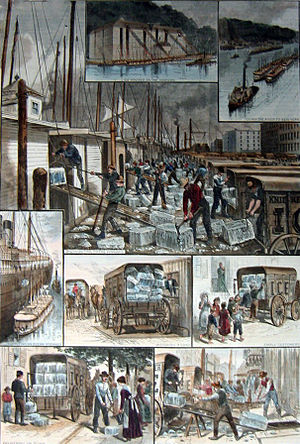It seems strange to know that for a nation which is blessed abundantly with the best in natural resources and oil supplies, it is now inviting trash from across Europe to be burnt in its vast incinerators.
Interestingly, Norway is doing so in an effort to generate energy from burning waste as an increasing number of cities across United Kingdom are paying to export rubbish to Norwegian incinerators. Although this sounds like a brilliant move of generating energy from waste, green campaigners think otherwise.
The business of trash may come across as a depressing and unexciting enterprise, but it is seen as an increasingly profitable venture. For instance, United Kingdom paid handsomely to export 50,000 tons of household waste from its cities to Norway as there is a big European market, ever since waste has become a commodity in Norway.
Not just in Norway alone, more than 500 plants across Europe are now being equipped to deal with rubbish disposal in the European Union alone, which can help in providing electricity and heat to more than 25 million people across EU. In terms of imported rubbish, Germany ranks the highest followed by Sweden, Belgium and the Netherlands. However, it is Norway that lays the claim to the largest share of waste for the purposes of energy in producing heat to districts, according to reports from the State of Green funded by the Danish government.

The waste incinerator in Oslo has been built with extra capacity to anticipate future growth. An increasing number of countries in EU are doing away with landfill, which is why Norwegian authorities assume that the growth to energy from the EU is only going to increase. Currently the city of Oslo can accommodate approximately 500,000 tons of waste every year and the city imports approximately 50,000 tons from the United Kingdom alone. On the whole, Europe presently dumps approximately 200,000,000 tons of waste in landfills each year, hence there is evidently a vast potential in employing waste for energy.
Most towns and cities in the United Kingdom find far cheaper to send out their waste than to pay landfill fees.
The waste is carefully sifted and only clean trash is fed to the incinerator with the help of a separate section that cautiously filters out any waste matter that could be hazardous. Norwegians are known to be extremely fastidious about the waste and most of their household rubbish is sorted into three bags – recycled products go into a blue plastic bag, food waste is put into a green bag that is used to make biogas while everything else that can be used in the waste incinerator is put in a white bag.
However some Norwegians are concerned about the kind of rubbish being imported from the EU as they are of the opinion that the waste matter is not as meticulously divided and sorted as the way it is done in Norway. A growing group of Norwegians are also of the opinion that the incinerators usually built around mountain tops are a blot to the natural landscape. Most people in Norwegian cities, especially around Oslo, regard the waste incinerators as quite ugly and would like to do away with it by thinking of long-term strategies for minimising the burning of waste.
But on the whole, most citizens are agreeable with the thought of creating fuel from waste and largely support the renewable energy option, considering it to be a positive move and an environmentally friendly energy option.
Carol is a young professional blogger, she spends most of the timeon researching and writing matters on home design and décor subjects. Currently she is planning to research and write articles on septic tanks & sewage systems issues, and wantsto share the articles on relevant blogs.
